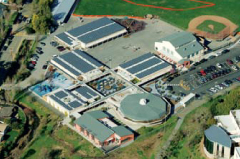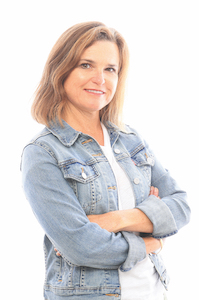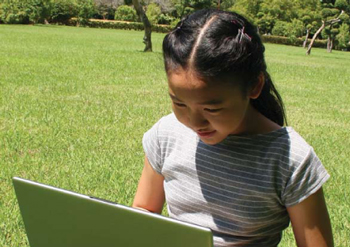While the school year winds down for students, administrators and parents around Marin are busy working on plans for their next school year. A top priority on many agendas is to “green up” the facility. “From recycling bins to organic gardens to constructing solar panels and water filtration systems to helping clean up streams and beaches, students are involved in making our community a ‘greener’ place,” says Mary Jane Burke, Marin County Superintendent of Schools.
For instance, at the Novato Charter school (like many others), waste is discouraged. Students are asked not to use plastics or paper in their lunches, and hot lunch students are asked to bring their own plates and utensils to be washed at home. Bacich School in the Kentfield School District, redesigned to be a solar school, is now one of the most solar-dependent schools in the state. And then there is the Greenwood School, a Waldorf-inspired elementary and middle school in Mill Valley, which dedicates an entire day every week (rain or shine) to teaching its curriculum outside in nature.
“ ‘Going green’ is another way of describing the emphasis placed on the importance of preserving the environment that is a part of every student’s education in Marin County,” Burke explains. “Teaching students both why they should preserve their environment and how to do so in personal, practical terms is fundamental to them becoming self-fulfilled, productive citizens. After all, there is no future in being academically prepared in a polluted world.” —M.T.
Healthy Lunches
A far cry from the hairnetted muse who inspired Adam Sandler’s ditty “Lunch Lady Land,” hot lunch programs all over Marin are getting with the program. Gone are the soggy, trans-fat-ladden sloppy joes washed down with a Coke; in their place are fresh, bone-building, energy-giving and, most important, tasty options in kid-size portions.
Kid Chow, a San Francisco–based company, serves up healthy lunches (nutritional breakdown included in menu) in environmentally friendly packaging. And Good Earth Organic Lunches, produced by the legendary grocery store of the same name in Fairfax, are made with ingredients sourced from local and organic suppliers.
Both of these companies sell independently to parents, but deliver to the school. Interested in making a change with the hot lunch program at your school? Check out kidchow.com or goodearth-organiclunches.com. —M.T.
Planning to go green?
Here are a few helpful organizations in Marin:
The Marin Conservation Corps is a multiprogram resource for individuals as well as schools. Its For Earth’s Sake (FES) program collects usable office supplies that would otherwise be tossed from Marin companies and brings them to schools. The Corps will also help set up efficient recycling programs (San Rafael). 415.454.4554, marincc.org
The Richardson Bay Audubon Center offers six different programs for schools, including Your Wondrous Watershed; Building a Green Team at Your School; and School Gardens and Schoolyard Habitats (Tiburon). 415.388.2524, tiburonaudubon.org
The Bay Institute The STRAW project provides teachers and students with the scientific, educational and technical resources to prepare them for hands-on outdoor watershed studies, including ecological restoration of riparian corridors. STRAW’s goals are to empower students, to support teachers, to restore the environment, and to reconnect communities. 415.506.0150, bay.org
Marin Sanitary Services Looking to recycle? Devi Peri, education coordinator with Marian Sanitary Services, can help. Although MSS only covers central Marin from Larkspur to San Rafael, Peri will try to assist anyone who needs help navigating through the other five private sanitation agencies in the county. She says the best way to achieve a successful recycling program is coordination between the janitorial staff, the students and at least one or two teachers. 415.453.1404, marinsanitary.com
 SPG Solar has an interactive kiosk at Bacich School’s library, where students, teachers, parents and visitors can view the solar system’s energy production in real time, as well as see how much energy the school is consuming.
SPG Solar has an interactive kiosk at Bacich School’s library, where students, teachers, parents and visitors can view the solar system’s energy production in real time, as well as see how much energy the school is consuming.
Bacich Elementary School is part of the Kentfield School District, the first school district in the nation to go 100 percent solar.

Mimi Towle has been the editor of Marin Magazine for over a decade. She lived with her family in Sycamore Park and Strawberry and thoroughly enjoyed raising two daughters in the mayhem of Marin’s youth sports; soccer, swim, volleyball, ballet, hip hop, gymnastics and many many hours spent at Miwok Stables. Her community involvements include volunteering at her daughter’s schools, coaching soccer and volleyball (glorified snack mom), being on the board of both Richardson Bay Audubon Center. Currently residing on a floating home in Sausalito, she enjoys all water activity, including learning how to steer a 6-person canoe for the Tamalpais Outrigger Canoe Club. Born and raised in Hawaii, her fondness for the islands has on occasion made its way into the pages of the magazine.


